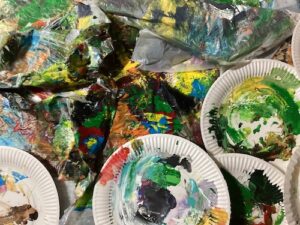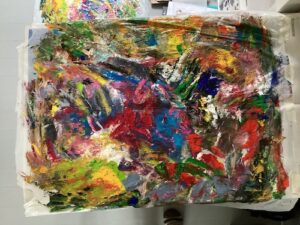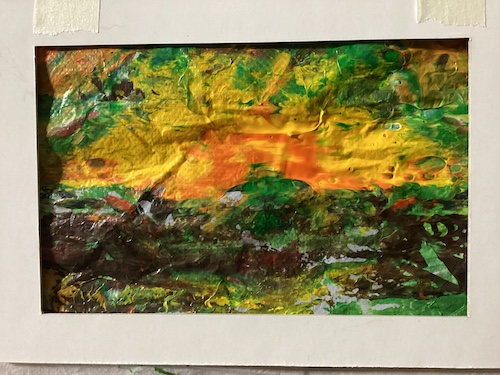More waste disposal
Okay, I admit it! My eco-friendliness is at the extreme end of a broad spectrum. I can occasionally go a bit overboard and go far beyond the bounds of reason. I am a person of extremes, but when push comes to shove, I can also be open to a grayer area.
Now I’m mainly thinking about acrylic paint and as you know, as soon as I hear the word “acrylic” I think “plastic”. Of course it is plastic and we should rather not use it, but…. Acrylic paint is also beautiful and, above all: easy. It is easy to work with at all levels in the creative field.
Where oil paint makes a greasy mess and often combines with solvents such as turpentine and which also has a very long drying time, gouache can be very beautiful, even in the cheaper variant of poster or school paint, but if used too thickly it will crumble and watercolour is too unpredictable. , acrylic paint offers the option of messing around or working very precisely and it dries clear, waterproof and with a shine.
Yes, we have to look for alternatives, but that is not always possible, such as in a nursing home where painting activities are provided twice a week. A friend of mine, also an artist, is a volunteer there and she told me about the acrylic paint, about what is thrown away (leftover paint on cardboard plates and a lot of dirty rinse water) and about the thin plastic aprons. The latter are reused if they are still intact after a session, but if they are torn, they are irrevocably thrown in the trash.

In November, after my own experiment with filtering acrylic rinse water, I went there on a Monday afternoon to see what I could do with the acrylic and plastic waste. The lady who supervised the activity was also thinking about how to reduce waste. She had already tried to put the remaining paint back in the jar, but that didn’t work because oxygen had already reached the paint and therefor it was already drying. You don’t want hard blobs in your paint jar and giving people less colours was so sad. And then I came, with a container and a spatula.

Rinse water, leftover paint, torn aprons, cardboard plates, everything is reusable.
The activity supervisor in the nursing home no longer has to feel bad about all that paint that was thrown away and I’m happy that the people in the house can continue painting with acrylic paint without making too big a footprint. It also produces beautiful art. We have a win-win-win situation here.
Now my friend is also going to collect the rinse water from the Friday club, the remains of acrylic paint are put in a separate jar and the plates are kept so that I can collect them on Monday, together with the “proceeds” of that session.
There will be a lot of acrylic art coming from my hand this year and I can honestly say that it is all waste.
